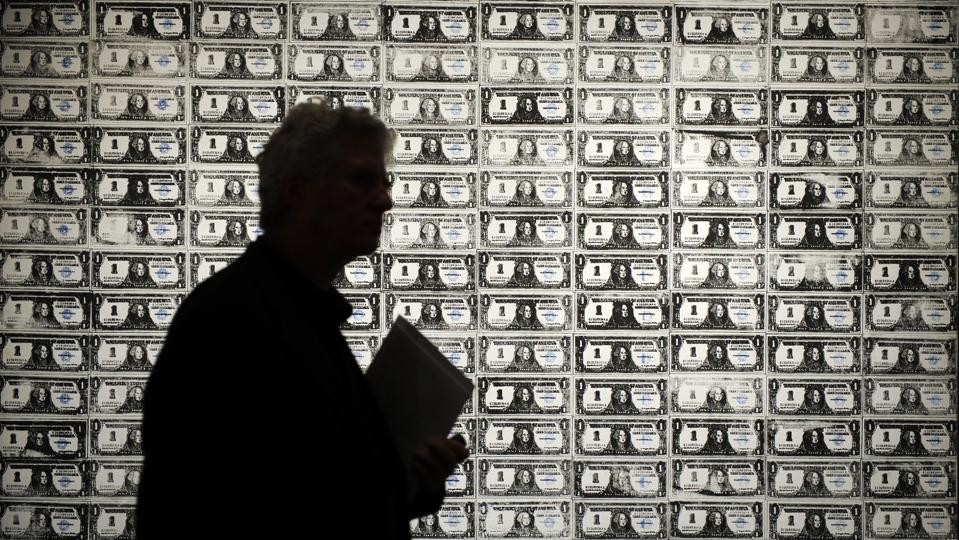Andy Warhol once said about money that is has a kind of amnesty. He said “I feel, when I’m holding money, that the dollar bill has no more germs on it than my hands do. When I pass my hand over money, it becomes perfectly clean to me. I don’t know where it’s been – who’s touched it and with what – but that’s all erased the moment I touch it”. Unlike Bitcoin, of course, which retains the entire history of all transactions in public and in perpetuity. which is one of the reasons that while it may be a new kind of digital commodity that in certain circumstances can exhibit money-like behaviour, it is not money.
Who Uses Cryptocurrency?
If you spend time on X, as I do, you’ll have the impression that everyone is talking about cryptocurrency and that a great many people are cryptocurrency owners. The figures, however, tell a different story. Two Federal Reserve surveys put US adult crypto ownership in the range 8-10% respectively in 2022, while Nielsen Homescan data has it a little higher (around 12%). Pew has American crypto ownership at 11-12% in early 2023. The Bank of Canada calculates bitcoin ownership there similarly around 10% in the same timeframe, while the Ontario Securities Commission put it at 13% before the crypto winter.
There are more than 50 million Bitcoin wallets out there but nearly half of all crypto owners have less than a couple of hundred bucks worth. The fact is that the public are not using bitcoin for transactions.. So who is?
Well, one of the circumstances in which Bitcoin does exhibit money-like behaviour is when it is the proceeds of crime. Here in the UK, a woman has just been convicted of money laundering and sentenced to jail for helping a fugitive Chinese fraudster shift the profits from a six billion dollar fraud. The woman, who had previously worked in a Chinese takeaway, aroused suspicion after trying to buy a £23 million mansion in London. When she was arrested, the police found her in possession of Bitcoin to the tune of around three billion pounds. Yes, that’s right. She had £3 billion in bitcoin, while another 23,308 Bitcoin linked to the investigation remains in circulation.
Now, I raise these interesting examples not to suggest that the only practical use of bitcoin (other than for speculation) is money laundering, ransomware and bribing politicians, but to point out that some proportion of the bitcoin out there is the proceeds of criminal activity and since the blockchain provides an immutable record of which coins have been involved in which criminal activity, the ability to follow the money is greatly enhanced. So unlike Warhol’s banknotes, UTXOs do have germs on them!
What I mean by that is since Bitcoin transactions are recorded on a public ledger they are transparent and, with enough effort, traceable. Advanced blockchain analysis tools can de-anonymise transactions, leading to the identification of payers and payees.
In the light of the evolution of such tools, perhaps law enforcement agencies should be encouraging an underground campaign to persuade the wide spectrum of criminals to get into bitcoin: Apart from anything else, bitcoin proceeds of crime can be tracked and traced in a fairly automated fashion, meaning that while it may take some time, there’s a decent chance to pick up the perps downstream. So while Bitcoin offers benefits in terms of ease of cross-border transactions (the stolen Chinese billions were taken out on a single laptop), market volatility and and evolving regulatory landscapes that could impede the conversion to fiat currency will make smart criminals think twice.
(I am sure you’ll remember the case of “Razzlekhan” and her partner who were arrested in February 2022 in Manhattan apartment and charged with laundering billions in bitcoin from the hack of the Bitfinex cryptocurrency exchange six years earlier. Bitcoins linked to the hack were used to buy, among other things, a $500 Walmart gift card on which purchases were made under Morgan’s own name according to the IRS. Pro tip: when laundering the proceeds of crime, avoid using your own name.)
Dollars Not Dogecoins
Bitcoin is not the only digital asset used in crime, of course. In a letter to Congress, the U.S. Treasury recently noted that stablecoins such as Tether pose a sanctions risk and requested appropriate legislation to deal with the problem, because wire transfers go via intermediary U.S. financial institutions or correspondent banks whereas stablecoin transactions involve no “U.S. touchpoints”. They are right to be concerned because on cryptocurrency exchanges located in sanctioned juridictions, stablecoins such as Tether are much more widely used, whereas in non-sanctioned jurisdictions the trading of bitcoins and stablecoins is roughly comparable.
This again suggests that speculation aside the global demand for cryptocurrency is to a large extent a proxy global demand for US Dollars, since almost all of the traded stablecoins are “fixed” against the US dollar. In countries with volatile economies and weak currencies, it seems quite understandable that cryptocurrencies can be seen as a flight to stability, where the Dollar’s role as a stable reserve might indirectly fuel interest in other assets so that while participants are trading in cryptocurrencies, they are ultimately relying on the stability and familiarity of the US dollar. It seems to me that the famous “exorbitant privilege” of the mighty dollar will extend into the digital realm for the foreseeable future.

